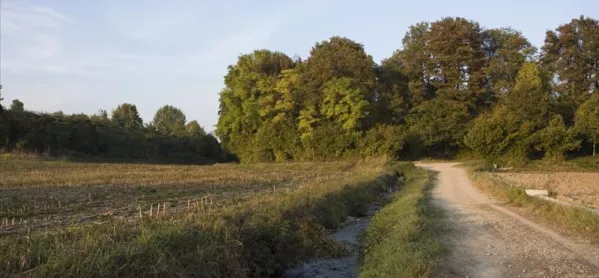Special education - Feel the earth
Help your class become explorers by going on a walk, says Louisa Leaman
Share
Special education - Feel the earth
https://www.tes.com/magazine/archive/special-education-feel-earth

An awareness of the world around us, whether it is the shops at the end of the road, or the wider environment in all its diversity, is an integral part of what it is to be alive. An exciting geography lesson can help to open this world and enable pupils to get a sense of their place and planet. For pupils with special needs, this is no less important, despite any physical, sensory or cognitive limitations they may experience.
Starting with the local environment, a few steps outside the school gates can present a variety of learning opportunities for special needs pupils, as their freedoms are restricted, and they provide opportunities to explore, observe, make decisions and take controlled risks.
The changing seasons also present an important, but accessible, learning experience - and one that is rich with possibilities for sensory activities. Weather sensations are most easily experienced and explored outdoors, but these sensations can be brought indoors.
A guided sensory journey involving props and sound effects can bring a geographical experience to life in the classroom or sensory room. The idea is to stimulate each of the senses, while telling a storydescribing what is happening, creating a more meaningful experience for pupils. An “autumn sensations” journey could involve:
- Dry leaves and other objects (such as pine cones, pumpkins and conkers) that can be strewn about the floor andor handled.
- An electric fan that can be activated by a switch (therefore allowing the pupil to control the experience), creating the effect of wind.
- Warm, soft scarves to wrap up in.
- Recorded sound effects such as wildlife, bonfires, rain, wind, children playing and rustling leaves.
- If appropriate, tastes, such as toffee apples or hot soup.
- Smells such as bonfire smoke (try burning a small piece of wood, then enclosing the remains in a jar - the aroma should be released when the jar is opened) or damp moss.
- Music: Vivaldi’s “Autumn” is an obvious choice.
- Visuals: a slide projector or a whiteboard screen displaying autumn images.
Sensory journeys can be adapted to represent any time of year or place. For example, summer could involve sand, water and driftwood (for a beach), the smell of sun-cream, the taste of cold ice-cream, the feel of warm pebbles (heat them in an oven beforehand), water spray and the sound of waves and seagulls.
Even the furthest reaches of the world can be brought to the pupils in this way. Consider how the classroom or a sensory room could be adapted to represent a tropical rainforest (create humidity with a boiling kettle), an African market (colourful fabrics and aromatic spices), a glacier (ice and collections of reflective surfaces, such as mirrors and metal), or a big city (recorded traffic noise).
With a bit of imagination the possibilities are endless, but if in doubt go to a geography resources website such as www.geographypages.co.uk. This may provide ideas and information about humanities and special needs. Another useful resource is www.whiteboardroom.org.uk, which provides a selection of geography-themed special needs whiteboard resources - just click on the resources section to see the choice.
Louisa Leaman teaches at Waverley School, an LEA school for special needs children of all ages with profound disabilities in Enfield, north London.
You've reached your limit of free articles this month. Subscribe for £1 per month for three months and get: